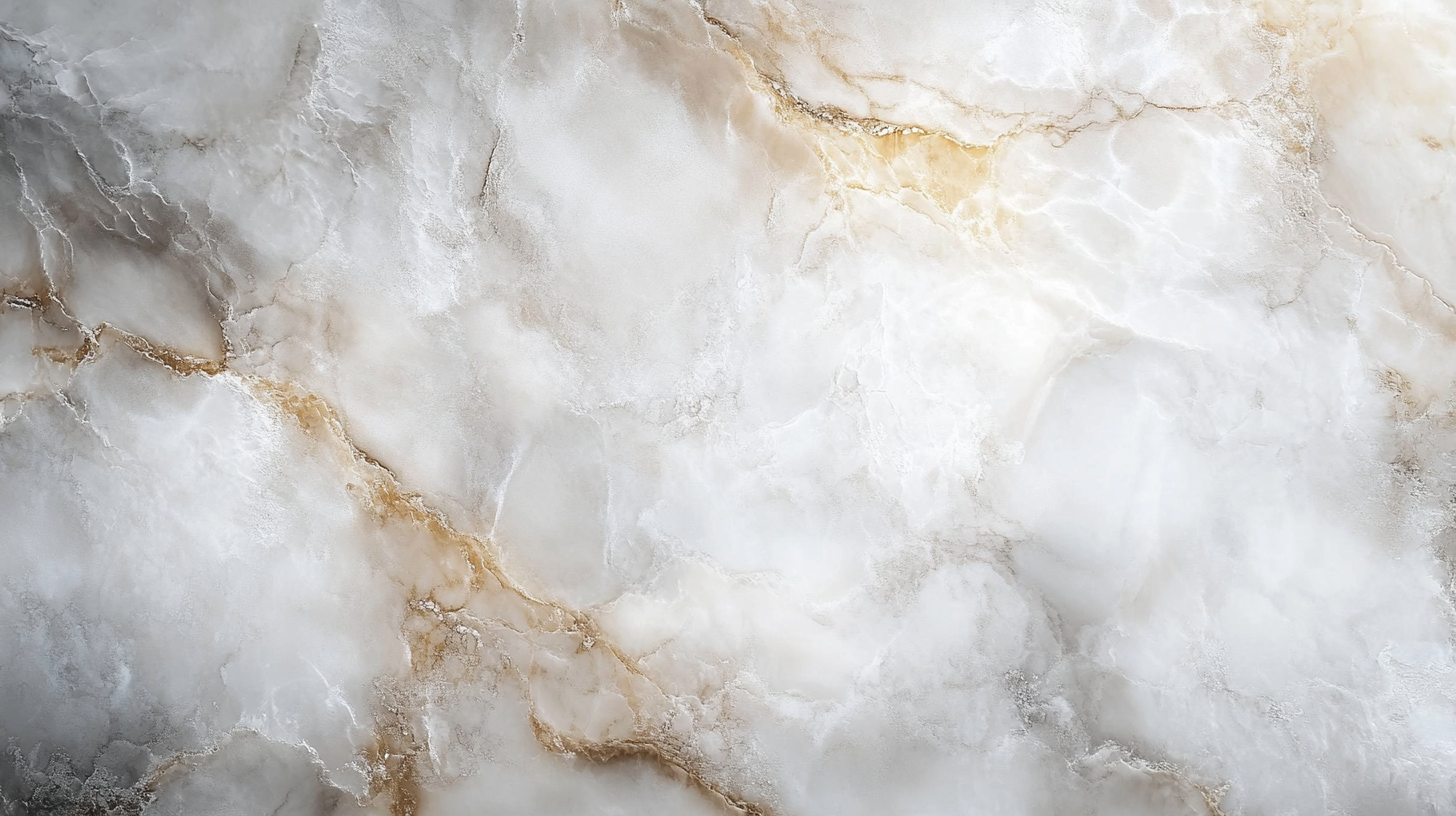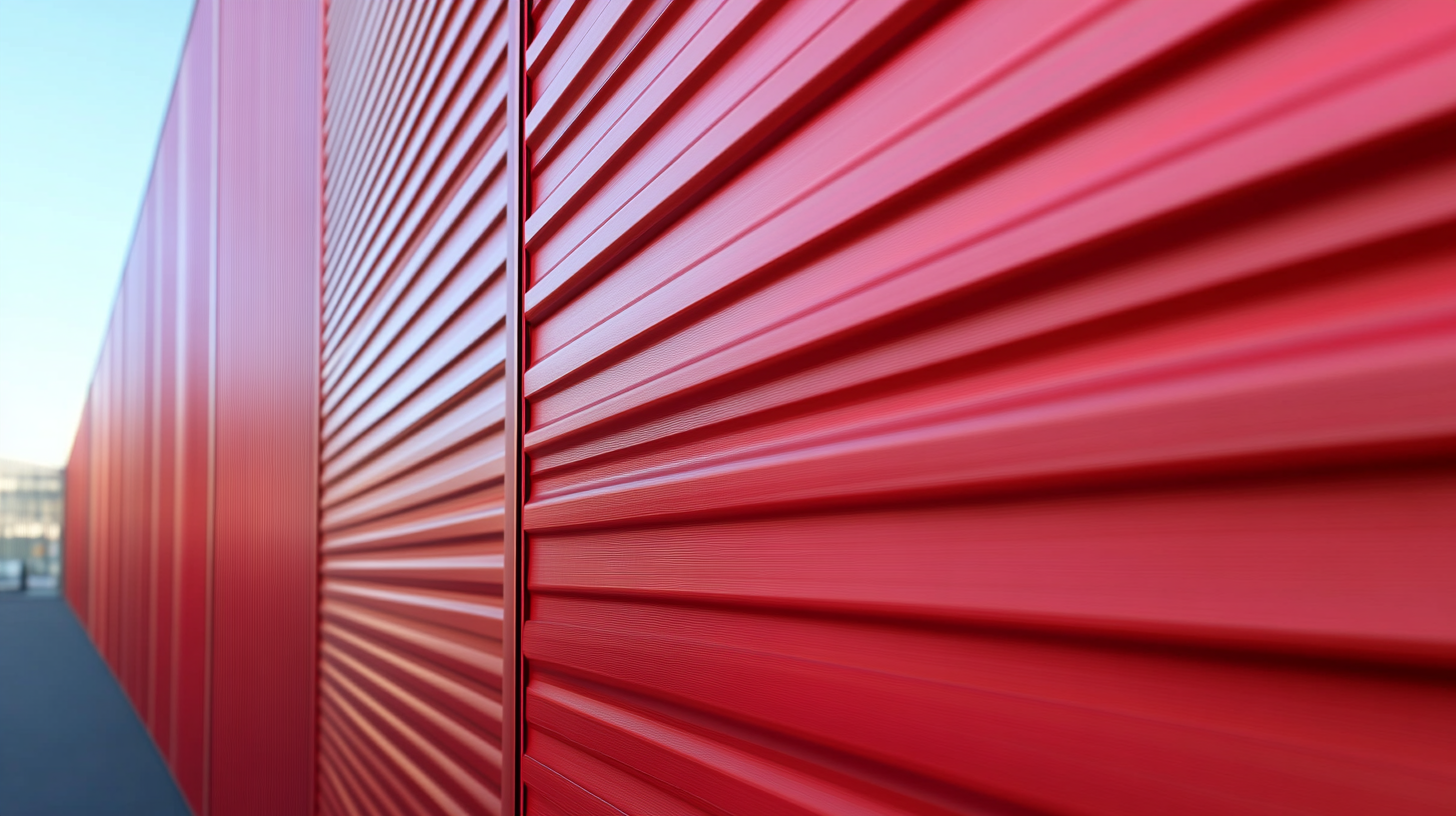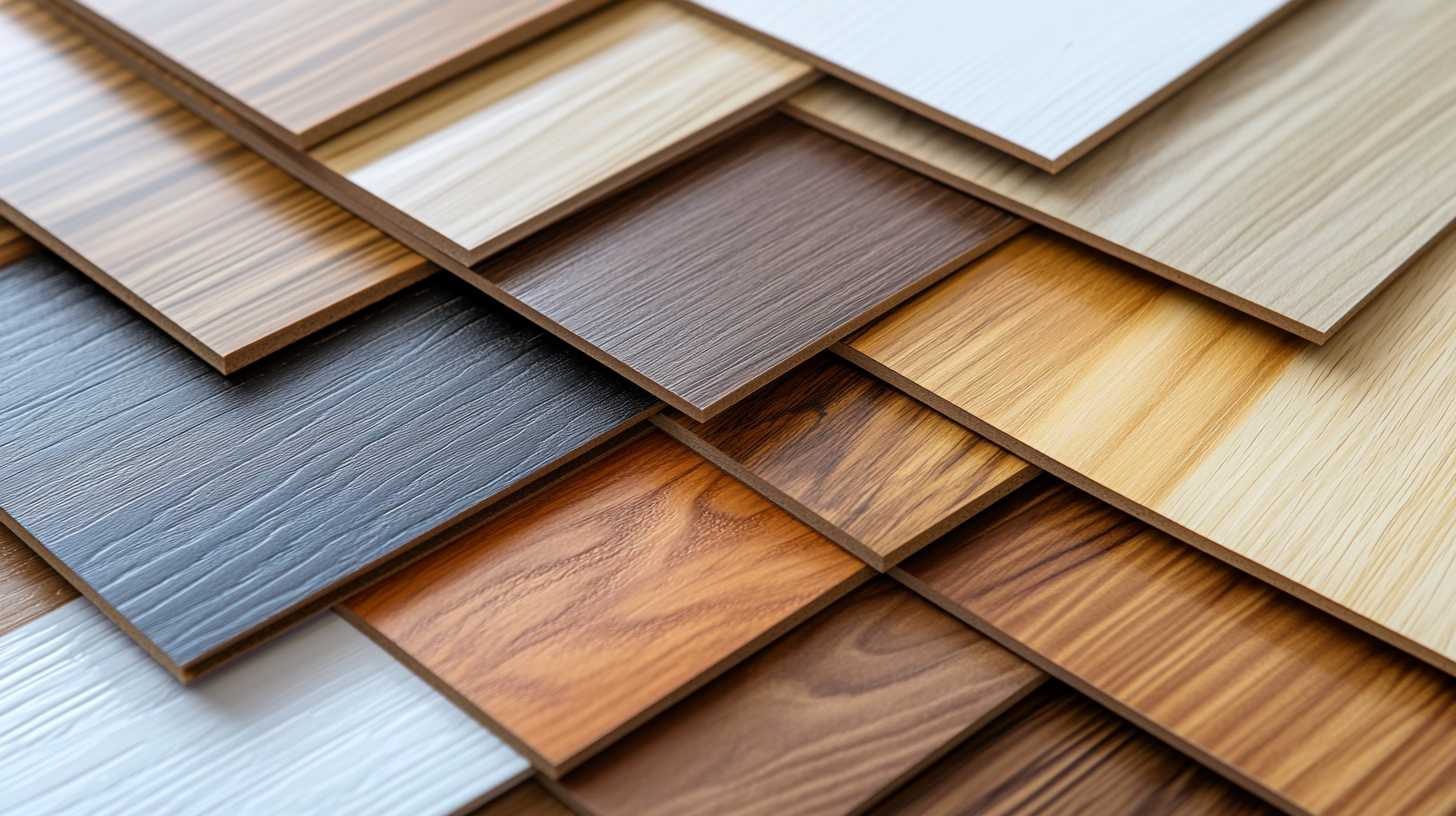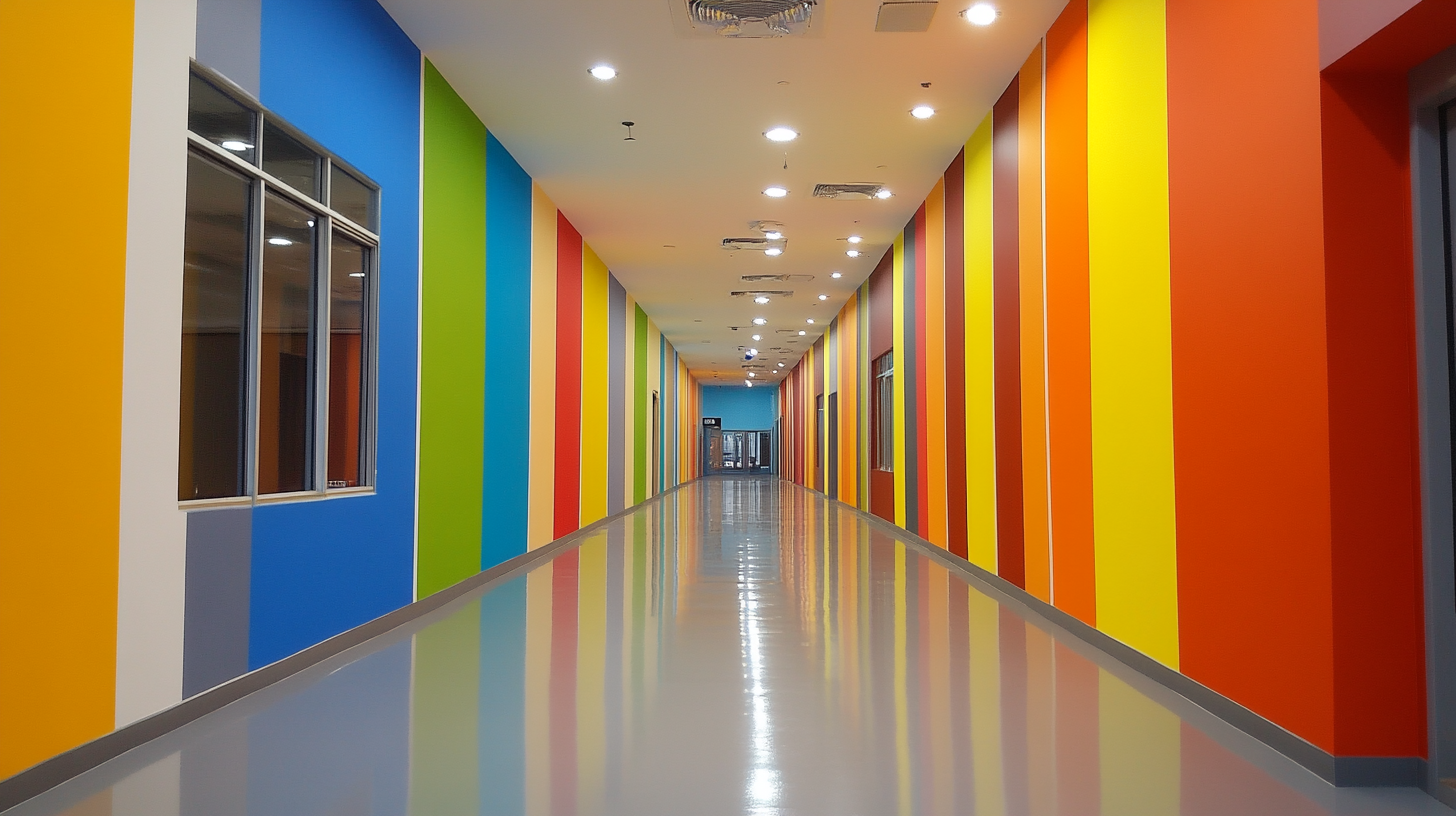
In recent years, PVC wall cladding sheets have gained immense popularity in both residential and commercial spaces due to their versatility and durability. These innovative materials provide an aesthetically pleasing finish while offering a practical solution for wall protection. Whether you're renovating a bathroom, kitchen, or any other area of your home, understanding the essential specifications of PVC wall cladding sheets can help you make informed decisions that enhance the beauty and functionality of your interiors.
This blog aims to provide a comprehensive installation guide, highlighting the key features, benefits, and specifications that should be considered before choosing PVC wall cladding sheets for your project. From the various thickness options to the range of colors and textures available, we will explore how these aspects influence the overall performance and appearance of your walls. Join us as we delve into the essential insights and practical steps needed to successfully install premium PVC wall cladding sheets, ensuring a flawless and long-lasting finish.

When choosing wall cladding for your projects, understanding the key features of premium PVC wall cladding sheets is crucial. These sheets offer a wealth of benefits that make them an ideal choice for various applications, including residential, commercial, and agricultural environments. One standout feature is their durability; premium PVC sheets are designed to withstand harsh conditions, making them highly resistant to impact, moisture, and chemical damage. This resilience ensures that they maintain both their appearance and functionality over time. Another significant advantage of premium PVC wall cladding sheets is their excellent insulation properties. They provide thermal insulation, which helps maintain the desired temperature in enclosed spaces, reducing energy costs in both heating and cooling. Moreover, these cladding sheets are lightweight and easy to install, streamlining the construction process and minimizing labor costs. The versatility in design and finishes allows for creative flexibility, making them an aesthetic addition to any building project. Moreover, recent innovations in wall panel technology have resulted in eco-friendly options that cater to specific needs, such as those for enclosed livestock farms. This includes features like energy efficiency and improved sound insulation, crucial for maintaining a suitable environment for animals. As the market for wall cladding continues to evolve, premium PVC options represent a modern solution that aligns with both functional requirements and aesthetic aspirations.

PVC wall cladding has emerged as a popular choice in interior design due to its myriad benefits that cater to aesthetic as well as functional needs. According to a report by Research and Markets, the global PVC cladding market is projected to grow at a CAGR of over 5% from 2021 to 2026, which underscores the rising trend in this innovative building material. One of the primary advantages of PVC wall cladding is its durability. Unlike traditional materials, PVC is resistant to moisture, pests, and decay, making it an ideal option for both residential and commercial settings.
In addition to its longevity, PVC wall cladding offers exceptional versatility. Available in a wide range of colors and finishes, it allows designers to achieve various aesthetics while maintaining a low maintenance profile. A study by Allied Market Research estimates that the demand for decorative wall cladding is expected to reach USD 25 billion by 2025. This growing preference for PVC cladding is linked to its ability to replicate the appearance of natural materials such as wood or stone without the associated maintenance costs.
Furthermore, PVC wall cladding contributes significantly to energy efficiency. Its insulation properties can enhance the thermal performance of buildings, consequently reducing energy consumption. According to the U.S. Department of Energy, improving insulation can lead to energy savings of up to 20% annually. By choosing PVC wall cladding, homeowners and designers are not only investing in aesthetic appeal but also promoting sustainable building practices that can contribute to long-term energy savings.

When it comes to enhancing interior spaces, PVC wall cladding has gained significant traction in both residential and commercial applications. The installation process is crucial for achieving a seamless, high-quality finish. Studies indicate that well-installed PVC cladding can improve energy efficiency by up to 20% due to its insulation properties, making it a popular choice for modern building designs.
To begin the installation, ensure that the surface is clean, dry, and free from any previous materials that could affect adhesion. Generally, the first step is to measure the area to determine the amount of cladding needed. According to industry reports, a proper measurement reduces material waste and lowers overall project costs.
Next, it’s vital to cut the sheets accurately using a fine-toothed saw or a utility knife for a clean edge. Before applying adhesive, it's advisable to conduct a dry fit of the panels to ensure they align perfectly. Many professionals recommend a quality adhesive with a strong bond, enhancing durability and stability over time. An industry survey shows that using high-quality materials can extend the lifespan of wall cladding, with some products lasting over 20 years with minimal maintenance.
Finally, installation should proceed from the bottom upwards, allowing each panel to interlock, providing a cohesive look and preventing water ingress. Ensuring even spacing with spacers will help maintain a professional finish. Following these steps not only simplifies the installation process but also guarantees a long-lasting aesthetic that can significantly elevate the ambiance of any space.

When it comes to maintaining premium PVC wall cladding, understanding the right care techniques is crucial for ensuring its longevity and aesthetic appeal. According to a report by the Building Research Establishment (BRE), PVC wall cladding can last upwards of 25 years with proper maintenance, significantly reducing the need for replacements and repairs. This lifespan can be further extended by following a regular cleaning routine and addressing minor issues promptly.
One of the most effective maintenance tips involves regular cleaning using mild detergents and soft cloths. Harsh chemicals can damage the surface and diminish its protective qualities. The National Association of Home Builders (NAHB) recommends cleaning cladding at least twice a year to prevent the buildup of dirt, mold, and grime, which can lead to premature wear. Investing time in this simple practice not only preserves the aesthetics of PVC wall cladding but also helps maintain its moisture resistance.
Furthermore, inspecting the cladding for any signs of damage or wear should be part of a regular maintenance schedule. The Vinyl Siding Institute points out that early detection of issues such as lifted seams or cracks can prevent more severe problems down the line, consequently avoiding significant repair costs. Ensuring that sealants and joints are intact is essential, as this prevents water infiltration that could compromise the integrity of the wall structure. By adopting these preventative measures, homeowners can enjoy the benefits of their PVC wall cladding for many years to come.
When considering wall materials for both residential and commercial spaces, PVC wall cladding stands out due to its numerous advantages over traditional options. A report by the Freedonia Group highlights that the demand for PVC wall coverings is projected to reach $6.7 billion by 2024, reflecting a growing preference for synthetic materials that combine durability with aesthetic appeal.
One of the key differentiators of PVC wall cladding is its impressive water resistance. Unlike wood or drywall, which can warp or rot in humid conditions, PVC maintains its integrity in wet environments. According to a study from the Building and Construction Authority, this characteristic makes PVC an ideal choice for areas like bathrooms and kitchens, where moisture is prevalent. Additionally, the report indicates that PVC cladding can withstand extreme temperatures, further enhancing its versatility compared to materials like plaster or natural stone.
Furthermore, the installation process of PVC wall cladding is generally more cost-effective and less labor-intensive than that of traditional materials. A survey conducted by IBISWorld found that labor costs for installing PVC panels can be up to 30% lower than those for ceramic tiles or hardwood. With easy-to-handle sheets and a straightforward fitting process, PVC not only saves on installation costs but also reduces downtime in construction projects, allowing spaces to be ready for use more quickly. This efficiency, combined with minimal maintenance requirements, positions PVC wall cladding as a compelling option in the competitive landscape of wall materials.
